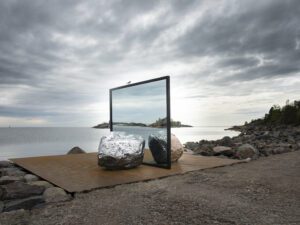“How might contamination be a force for positive change? How can we use biennials for the wider regeneration of things? How might agency extend beyond humans to other nonhuman entities and assemblages, including artificial intelligences? How might these threads be channelled into rethinking the ways that practices and future worlds might be conceived?” These are the questions Helsinki Biennial Curator Joasia Krysa asks. From 11 June to 17 September, the international art event returns with 30 artists and collectives from Finland and around the world. The programme comprises of 50% new commissions and site-specific works, sprawling across mainland venues including HAM Helsinki Art Museum, Helsinki Central Library Oodi, Stoa and Caisa Cultural Centers and online. This year, the Biennial has also chosen a central location of Vallisaari Island in the Helsinki archipelago, as it emphasises the need to work with surrounding environments and ecosystems through outdoor exhibitions. In accordance with the title New Directions May Emerge, adopted from anthropologist Anna Lowenhaupt Tsing (b. 1952), the event proposes learning from “noticing.” At the heart of the Biennial stands three main conceptual threads: agency, contamination and regeneration. These topics are reflected in the works on display, where pieces range from data-based sculptures by Adrián Villar Rojas, to fantastical installations by Diana Policarpo, bringing together topics of environmental damage, political conflict and technological evolution.
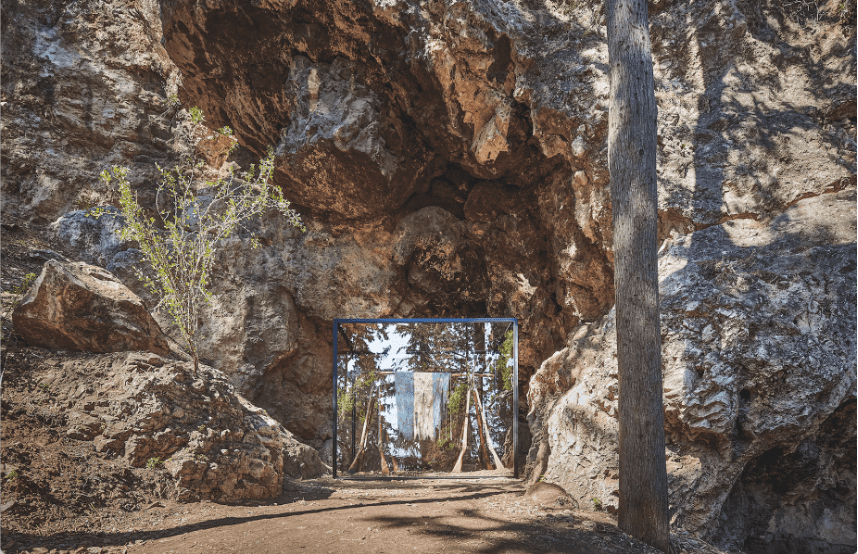
From The Series the End of Imagination | Adrián Villar Rojas
On Vallisaari Island, the Rojas (b. 1980) presents a site specific sculptural work, From the Series of the End of Imagination (2023), expanding from his ongoing series Brick Farm. Nest-shaped sculptures sprawl across the island, attached to buildings, rocks and trees, as inspired by the Argentinian hornero bird – which makes its nests from mud, rubble and straw, adapting them to human-built surroundings. Pieces have been designed using a software called the “Time Engine”, that simulates various environments, subjecting works to conditions of altered gravity, fire, other life forms, war and unrest. The artist modelled worlds, which in turn shaped the sculptures. The process maintains Rojas’ interest in the ecology, whilst also marking a shift in his practice from organic pieces to artificial forms. On Vallisaari today, the works are exposed to natural and built environments of the island, as they embrace ideas of destruction and decay.
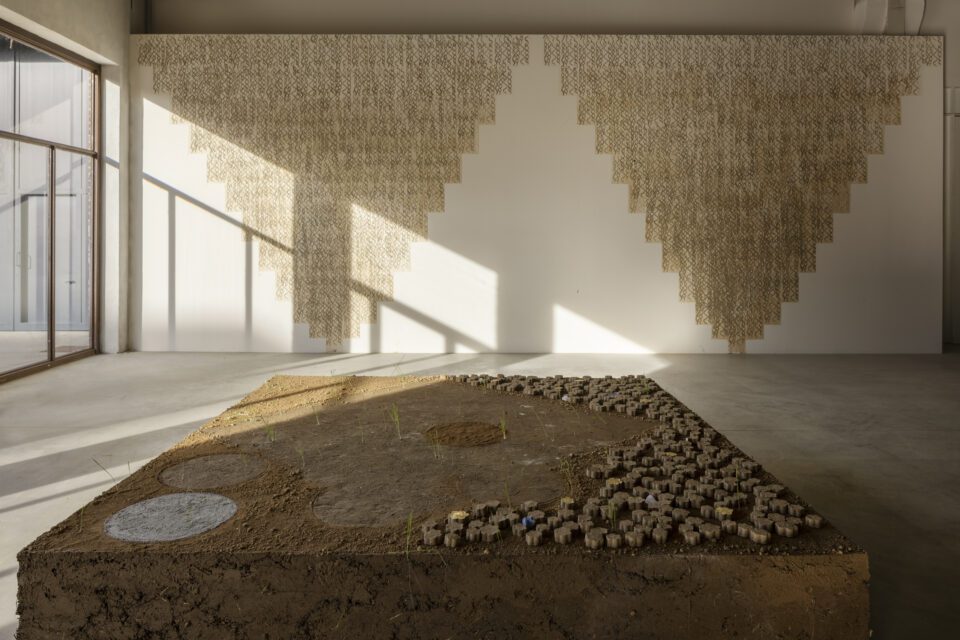
I Re-member Mama | Dineo Seshee Bopape
Dineo Seshee Bopape (b. 1981) is known for her use of soil and other organic materials as a base for multi-sensory work that connects deeply with terrains. In addition to packed earth installations, the artist works with drawing, video and sound to create a rich practice connected to belonging, memory and place. I Re-member Mama (2023) is a sculpture that invokes connections to land a family, taking the form of a billboard made of rammed earth, textured with organic material and rocks of various sizes. It offers a way of remembering Bopape’s grandmother’s stories, as well as other family members, and the elements of earth that “feed, nurture, house and support us all.” In a call for healing and solace, it draws attention to the memory of land and the power of preservation to protect natural environments.
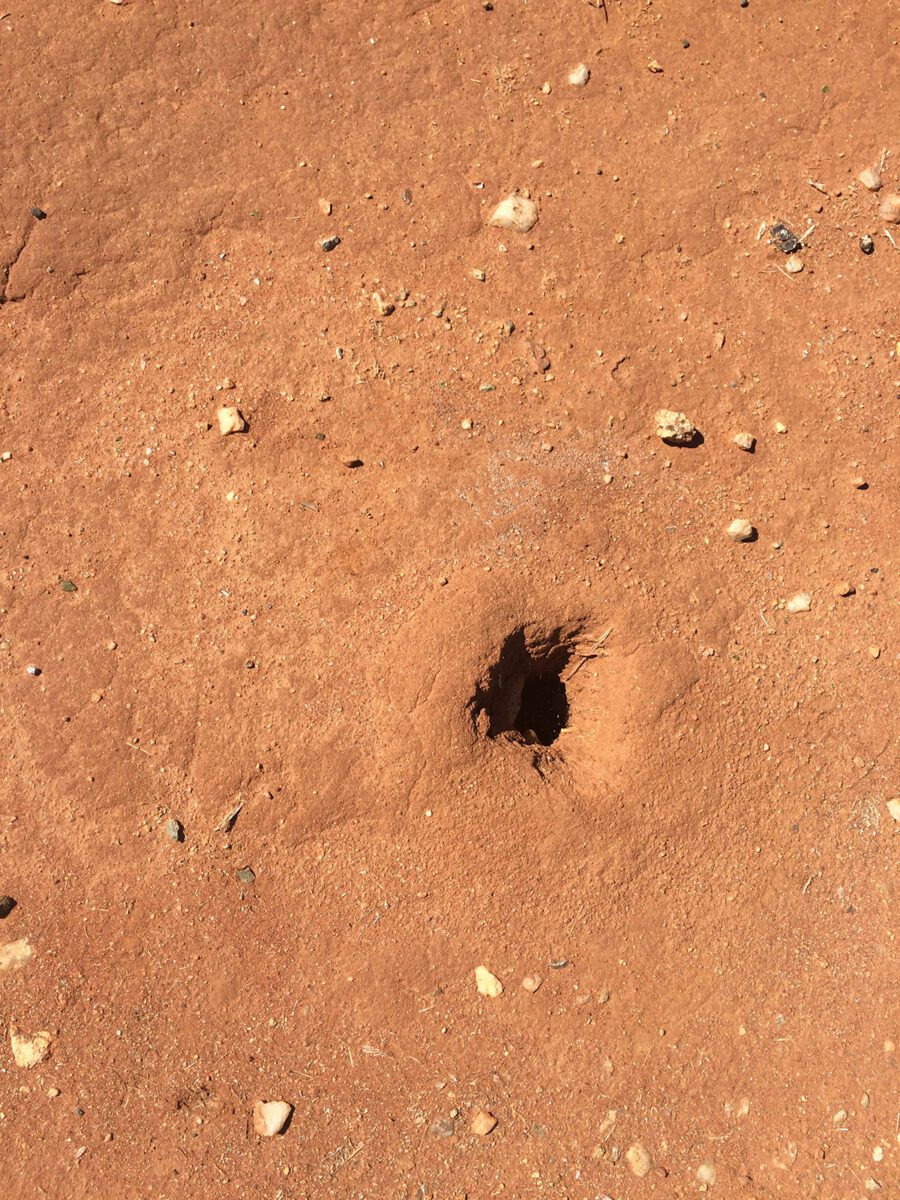

Pond Brain | Jenna Sutela
The Berlin-based artist works with biological and computational systems – such as the human microbiome and artificial neural networks – to create sculptures, images and music. Sutela (b. 1983) presents Pond Brain (2023) which consists of a water-filled bronze bowl expanding upon the shape of the artist’s own head. The instrument invites the viewer to rub the piece in order to make it ‘sing’. When played, it interacts with sound produced using machine learning technology to create a soundscape based on wider audio excerpts such as outer space or under the sea. As the “sonic vibrations increase, water droplets start to bounce up from the surface,” creating an installation in the traditional “spirit of a Chinese spouting bowl, or a German Wasserspringschale,” as well as contemporary music, pattern and technology.

Ciguatera | Diana Policarpo
Through speculative research, the artist investigates economic structures, gender politics and interspecies relations. Diana Policarpo (b. 1986) examines experiences of vulnerability associated with the impact of the modern world. This is reflected in Ciguatera (2022), a large-scale installation that maps colonial histories through the tracking of natural biodiversity. The work originates from a research trip to the Portuguese-administered Ilhas Selvagens (Savage Islands) in the North Atlantic Ocean. Rock-shaped sculptures embedded with video and sound tell accounts that are both fact and fiction, based on science and stories. Microorganisms are integrated into the process of storytelling, as digital media becomes a sculptural material to navigate physical space. Meanwhile, viewers hear the voices of the island and its inhabitants narrating their roles and mythologies, intertwining legends such as Perseus and Medusa.
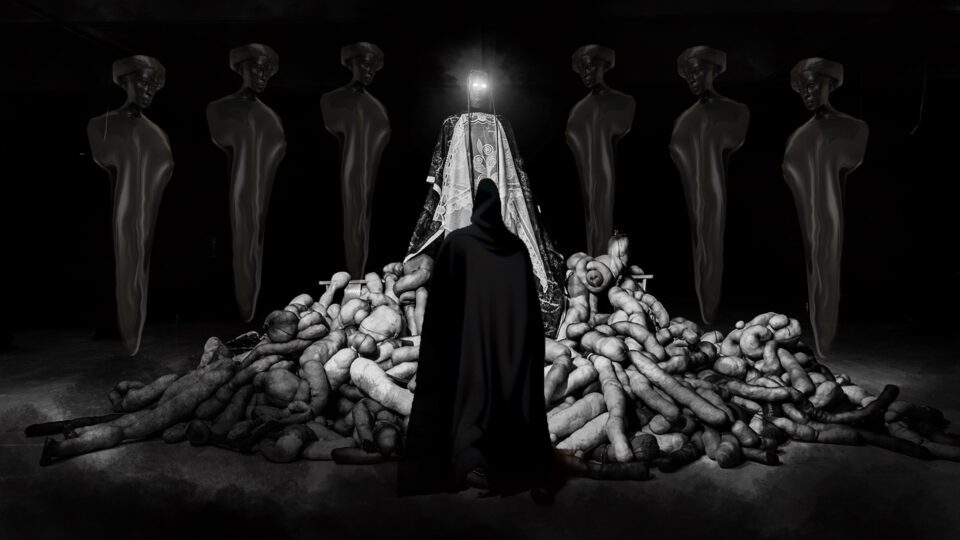
Thou Shall Not Assume | Danielle Brathwaite-Shirley
The London-based artist works in animation, sound and video game development, focusing on intertwining lived experience with fiction to imaginatively retell the stories of Black Trans people. Thou Shall Not Assume (2023) invites visitors to take part in a role-playing performance event, exploring a new mythology for Vallisaari island. Players are thrust into a situation that begins, “Now in the new world those journeys, those memories, have begun to resurface. A new time has emerged for the pilgrimage to The Gate of Rebirth.” Participants meet various people and scenarios as they are lead on a journey determined by collaborative decision-making, moving from spaces of solidarity to situations that frame accountability. Characters take the form of physical sculptures, where viewers can also listen to their background stories online.
helsinkibiennaali.fi | 11 June – 17 September
Image Credits:
1. Exhibition view “The Soul Expanding Ocean #4: Diana Policarpo. Ciguatera”, Ocean Space, Venice, 2022. Commissioned by TBA21–Academy. Co-produced by TBA21–Academy and Centro de Arte Moderna Gulbenkian, in collaboration with Instituto Gulbenkian Ciência. Courtesy of the artist and Lehmann + Silva gallery, photo by Matteo De Fina.
2. ADRIAN Adrián Villar Rojas, The Theater of Disappearance, 2017 will be seen in Helsinki Biennial 2023. © Adrián Villar Rojas, NEON foundation.
3. Dineo Seshee Bopape – Born in the first light of the morning, 2022. Image courtesy the artist and Pirelli Hangar Bicocca, Milan. Photo by Agostino Osio.
4. Dineo Seshee Bopape
5. Image: Jenna Sutela, Pond Brain (2023). Photo: Julian Blum. Image courtesy of the artist.
6. Danielle Brathwaite-Shirley: Thou Shall Not Assume, 2023. © HAM/Helsinki Biennial/Sonja Hyytiäinen




